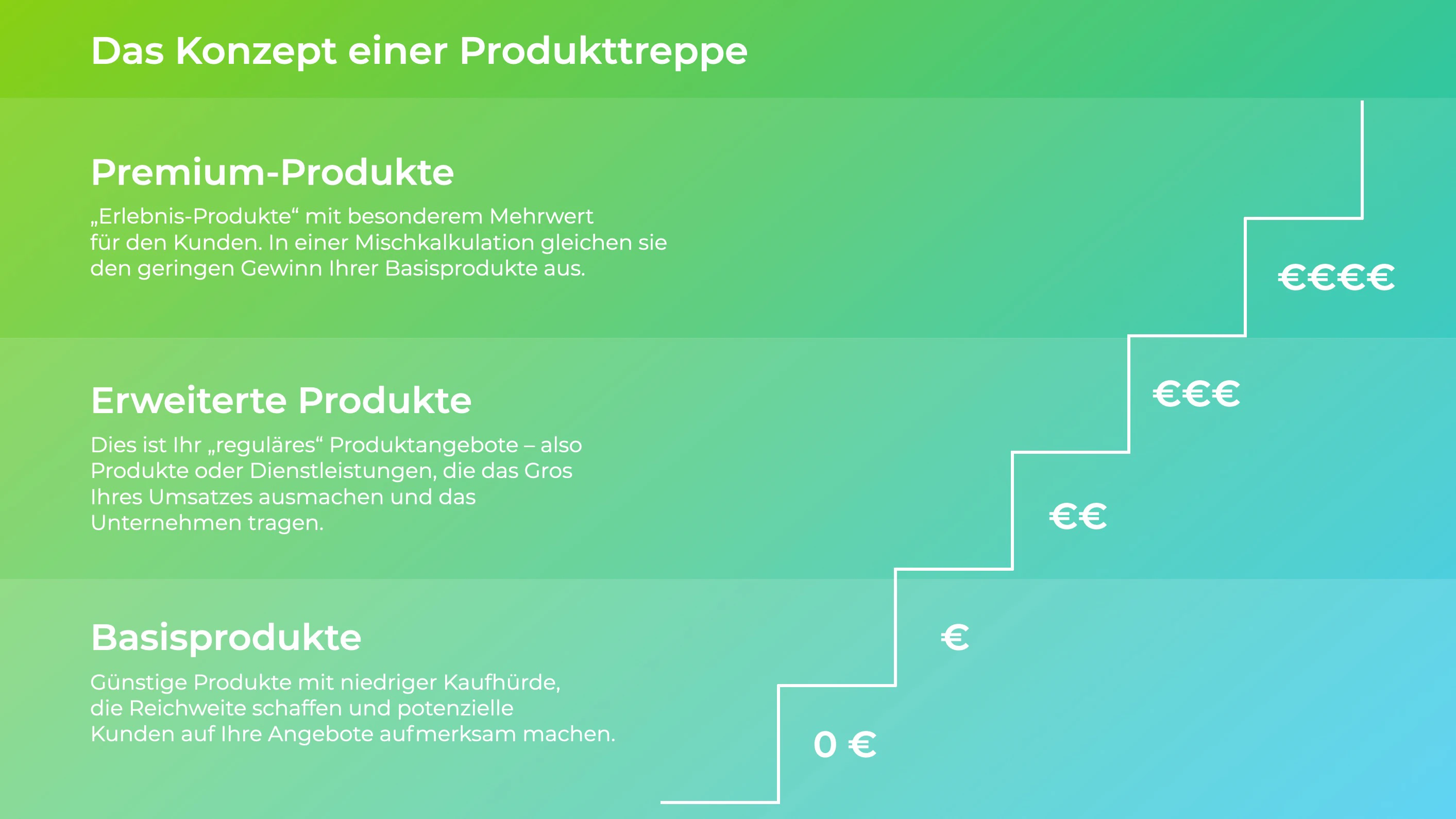Branding: The product ladder for clear offers
How start-ups or companies undergoing change can present different product variants in order to create more reach and support their business.
If you’re a startup launching your first business, or an established company looking to reposition your offerings, sooner or later you’ll certainly encounter the principle of the product ladder. Along with good branding, it’s one of the most important concepts for your entrepreneurial success. But what exactly is the product ladder?
The product ladder
The product ladder is a model that helps companies plan different levels of products or services. First of all, it’s important that you gain an overview of your product range and can present it clearly. You can imagine the product ladder as a literal staircase, with each “level product” representing a different level of value and price.
Basically, the product ladder has three levels:
- Basic products: These are basic products (or services) that have a very low barrier to purchase. They are usually the simplest and cheapest versions. Their purpose is to increase your reach. Basic products are designed to appeal to a particularly large number of potential customers and can be promoted, for example, via your website or social media channels. Basic products can also include freebies that initially generate attention for you.
- Extended Products: These products or services offer additional functions or features that increase their utility. These products belong to the mid-price segment—that is, they lie between your cheapest and most expensive offerings. Their task is to generate the majority of your sales and support your business. Since these are not the cheapest products, they will appeal to fewer customers than the basic products—but the profit per customer is also higher. Ideally, customers who have already purchased one of your basic products will decide to purchase an extended product. For this reason, it is important that the product groups are compatible, i.e., they build on one another or can be complemented. For example, one of your basic products might solve a basic problem, but it is not the ideal solution—these are available as an extended or premium product.
- Premium products: These are products that offer special extras or benefits, such as exclusive design, special service, or other luxury features. Because these products are the most expensive, they are purchased by the fewest customers, as they only appeal to a particularly demanding clientele. However, the profit you can generate with these products is the highest.
What the product ladder tries to achieve
The goal of the product ladder is to guide customers through various product options so they can make the right choice based on their needs and budget. The product ladder helps companies structure their products to appeal to different target groups—from those who only need the essentials to those who want premium products or exclusive add-ons.
The product ladder makes it possible to increase sales by encouraging customers to switch from a simpler and cheaper product to a more expensive, more powerful, or more exclusive one. It can also help strengthen brand loyalty because customers who are satisfied with a basic product may later upgrade to a more advanced or premium product.
How to create your own product ladder
If you want to use the product ladder concept for your own company, first get an overview of your product and service offerings. Then organize them along the product ladder. It can be helpful to actually draw a ladder and divide it into three areas: “Basic,” “Advanced,” and “Premium.” Now you can assign each of your offerings to a level on this ladder: which of your products belong to the basic range, which to the advanced range, and which to the premium range?
In the second step, examine how your products are distributed along the product ladder. In which areas do you have the most products? And in which areas, perhaps, do you have none at all?
Ideally, you should have suitable offers for every level of your product ladder. However, this also depends on your business focus and your target audience. If you want to appeal to the masses with your products, it’s perfectly fine to focus your offerings on the basic level and not offer any premium products at all. However, if you only want to operate in the high-priced segment, the levels in the basic product range can be left empty.
Basically, you should keep in mind that you’ll achieve a wide reach with products that have a low barrier to purchase. Especially as a start-up, it’s therefore quite worthwhile to offer at least a few basic products that appeal to many potential customers.
Do you want to structure your brand’s offerings more clearly?
During a personal consultation, I would be happy to support you in defining your own product ladder and help you develop ideas and concepts for marketing your products and services.

